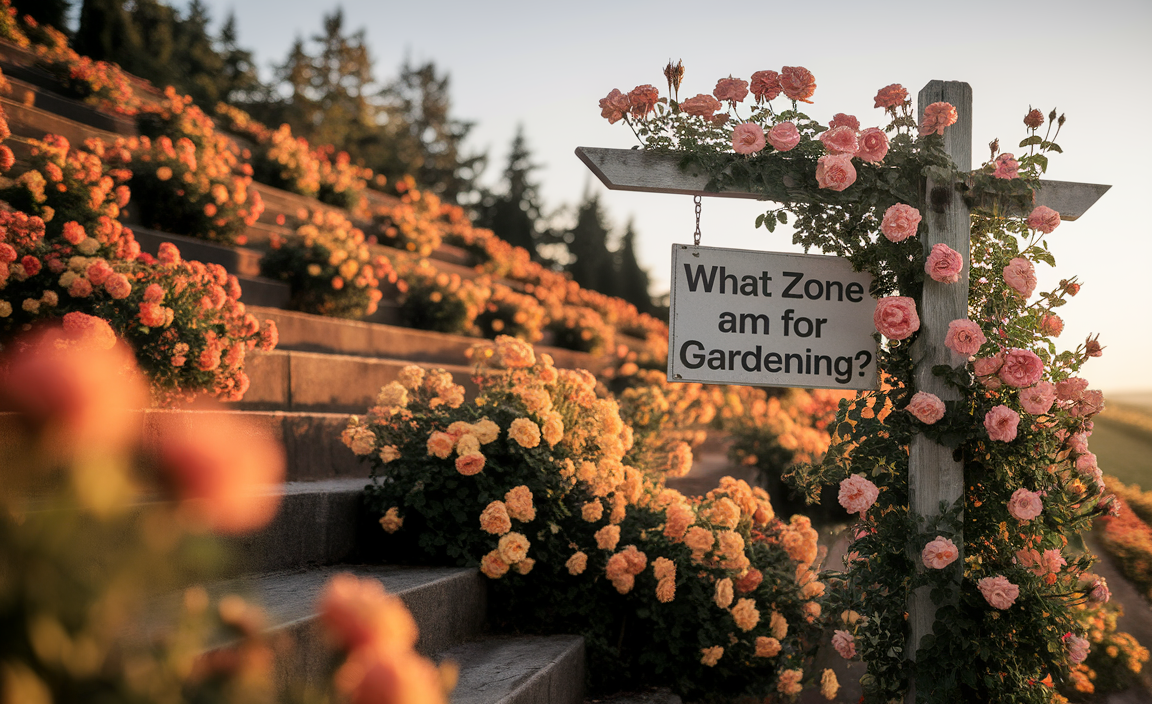Quick Summary: Don’t let your gardening dreams fade! A garden journal is your secret weapon for success. This guide provides genius garden journal ideas to track, plan, and celebrate your plants, from tiny seeds to bountiful harvests, ensuring a greener thumb for every gardener.
Garden Journal Ideas: Genius Tips to Cultivate Your Green Thumb
Ever feel like your plants have a mind of their own? You plant something with high hopes, and then… crickets. Or perhaps you remember that amazing tomato you grew last year but can’t recall what you did to make it so spectacular. Keeping track of your gardening adventures can feel overwhelming, especially when you’re just starting out with indoor pots or a patch of outdoor soil. But what if there was a simple way to remember what worked, what didn’t, and what to try next? That’s where a garden journal comes in! It’s your best friend for understanding your plants and becoming a gardening pro. We’ll explore some brilliant garden journal ideas that make tracking your progress easy and fun, no matter your space.
Why Every Gardener Needs a Garden Journal
Think of your garden journal as your personal gardening guru, always there to offer advice based on your own experiences. In the world of gardening, a little bit of planning and observation goes a long way. Without a way to record what you’ve learned, it’s easy to repeat mistakes or forget the simple tricks that led to success. Is your little succulent struggling? Did that pepper variety thrive in the heat? Your journal remembers!
It’s your space to capture the magic of your garden. You can document everything from the first sprout to the final bloom. This makes future gardening seasons smoother and more successful. Plus, it’s a wonderful way to watch your gardening skills grow over time!
Getting Started: What to Include in Your Garden Journal
Setting up your garden journal doesn’t need to be complicated. The best system is one you’ll actually use! You can go digital with an app or a simple document, or keep it classic with a notebook and pen. The key is to include information that will help you learn and grow.
Here are some essential elements to consider for your garden journal:
- Planting Details: What did you plant? When did you sow the seeds or plant the seedlings? What variety is it?
- Location: Where in your garden or home did you plant it? (e.g., “front flower bed,” “kitchen windowsill,” “balcony container”).
- Soil and Amendments: What kind of soil did you use? Did you add compost, fertilizer, or other soil enhancers?
- Watering Schedule: How often did you water? Did you notice if certain plants needed more or less?
- Sunlight Exposure: How much sun does the location get? (e.g., “full sun,” “partial shade,” “bright indirect light”).
- Pest and Disease Observations: Did you notice any bugs or signs of illness? How did you treat them?
- Growth and Bloom Dates: When did your plants sprout? When did they flower or produce fruit?
- Harvest Information: What did you harvest, and when? How much did you get?
- Weather Notes: Keep a general track of the weather – hot spells, heavy rain, frost – as this greatly impacts plant growth.
- Personal Reflections: What did you enjoy about growing this plant? What challenges did you face?
Genius Garden Journal Ideas for Every Gardener
Ready to make your garden journal a powerhouse of information? Here are some creative and practical ideas to elevate your record-keeping.
1. The “Plant Profile” Page
For each new plant or variety you introduce, dedicate a page (or a section) to its specific needs and journey. This is ultra-helpful for keeping track of different types of plants you’re growing.
What to Include:
- Plant Name: Common name and scientific name (if you like!).
- Variety: (e.g., ‘Brandywine’ tomato, ‘Misty’ lavender).
- Sowing/Planting Date: When it went into the soil or pot.
- Expected Germination/Growth Time: Based on seed packet info.
- Sunlight Needs: Full sun, part shade, etc.
- Watering Needs: Drought tolerant, needs consistent moisture.
- Soil Preference: Well-draining, rich, sandy.
- Mature Size: How tall and wide it gets.
- Space Requirements: How far apart to plant.
- Companion Plants: What grows well nearby?
- Pest/Disease Susceptibility: Common issues to watch for.
- Harvest Time/Yield Expectation.
You can even paste a picture of the seed packet or a photo of the plant when it’s looking its best to make it visually appealing!
2. The “Planting Tracker” Spreadsheet
Whether you’re managing a few pots on a balcony or a sprawling backyard garden, a planting tracker is invaluable. It helps you see at a glance what you’ve planted, where, and when. This is a lifesaver when planning what goes where each season.
Here’s a sample table structure you can adapt:
| Date Planted | Plant Name & Variety | Location | Seed Source | Notes (e.g., started indoors, direct sow) | Status (e.g., Growing, Transplanted, Fruiting) |
|---|---|---|---|---|---|
| March 15 | ‘Early Girl’ Tomato | South Garden Bed | Seed Packet | Started indoors under grow lights | Seedling, 4 leaves |
| April 1 | Radish ‘Cherry Belle’ | Front Raised Bed | Seed Packet | Direct sown | Germinated |
| April 10 | Basil ‘Genovese’ | Kitchen windowsill pot | Small plant from nursery | Transplanted into larger pot | Growing well |
| April 20 | Zucchini ‘Black Beauty’ | Back corner bed | Seed Packet | Direct sown, protected from slugs | Germinated |
3. “Problem Solver” Log
Gardening isn’t always smooth sailing. You’ll encounter pests, diseases, or environmental challenges. Create a section to document these issues and how you tackled them. This is a powerful resource for learning how to prevent or fix recurring problems.
Common entries for your Problem Solver Log:
- Date of Observation: When you first noticed the issue.
- Plant(s) Affected: Name and location.
- Symptoms: Yellow leaves, wilting, holes in leaves, spots, etc.
- Suspected Cause: Overwatering, underwatering, specific pest, nutrient deficiency, etc.
- Treatment Applied: Organic spray, manual removal, improved drainage, different fertilizer, etc.
- Date of Treatment: When you applied the solution.
- Outcome: Did it work? Did the plant recover? Did the problem return?
Knowing what worked for a specific pest on your roses last year will save you a lot of stress this year. Resources like Michigan State University’s Integrated Pest Management (IPM) Resources can help you identify problems and find effective solutions.
4. The Visual Journal: Photos and Sketches
Sometimes, a picture is worth a thousand words! Regularly photograph your plants. Capture them at different stages: as seedlings, when they start flowering, when they’re fruiting, and even when they’re looking a bit peaky. This visual record is incredibly helpful for tracking growth and identifying subtle changes that might indicate a problem.
You can also include sketches of your garden layout, specific plants, or even interesting insects you encounter. This adds a personal, artistic touch to your journal and can help you remember details about your garden’s design.
5. “Successes & Sunshine” Section
Don’t just focus on problems! Dedicate a part of your journal to celebrating your wins. Did you get your first ripe tomato? Did your orchid finally bloom? Did your herb collection flourish? Record these moments!
This section is for:
- Recording bumper harvests.
- Noting plants that thrived unexpectedly.
- Documenting your favorite garden moments or creations.
- Encouraging yourself to keep going, even after a tough season.
This part of your journal is a mood booster and a constant reminder of why you love gardening.
6. Weather and Seasonal Watch
The weather plays a huge role in gardening. Jotting down notes about significant weather events can help you understand why certain plants performed well or poorly in a given year.
What to note:
- Unusually hot or cold periods.
- Heavy rainfall or drought conditions.
- First and last frost dates.
- Any extreme weather events (hail, strong winds).
For example, if you had a particularly wet spring, and your zucchini plants were prone to powdery mildew, you’ll know to be more vigilant about air circulation and watering practices next year. For detailed climate information influencing your region, checking local government weather services is recommended. For instance, the National Weather Service provides climate data specific to various regions in the United States.
7. Garden Design and Layout Planner
If you’re planning new beds, a greenhouse, or even just rearranging your indoor plant shelf, use your journal as a planning tool. Sketch out your garden layout for the upcoming season. Think about crop rotation, companion planting, and how much space each plant needs.
This is especially useful for outdoor gardens to avoid overcrowding or placing plants in a spot that doesn’t suit their light requirements. For indoor setups, it helps you visualize your plant arrangements for optimal light and aesthetics.
8. Seed Saving Log
If you’re interested in sustainable gardening, saving seeds is a fantastic practice. Create a dedicated section to track which seeds you’ve saved, from which plants, and when. Note down how you stored them and any results from planting them the following year.
Seed Saving Log Essentials:
- Plant Name & Variety
- Date Saved
- Method of Saving (e.g., air-dried, wet processed)
- Storage Method (e.g., paper envelope, glass jar, in fridge)
- Quantity Saved
- Notes (e.g., “seeds from exceptionally healthy plant”)
This helps you maintain a reliable source of your favorite plant varieties and contributes to a more self-sufficient garden.
9. “Recipe Book” for Your Harvest
What better way to celebrate your garden’s bounty than by recording the recipes you make with your homegrown ingredients? When you harvest something delicious, take a moment to write down the recipe. This connects the joy of growing with the pleasure of eating.
Recipe Log Details:
- Date of Harvest & Recipe Creation
- Ingredients (mention which are homegrown)
- Full Recipe Instructions
- Notes on Taste or Variations
Imagine flipping through your journal and finding the perfect recipe for those cherry tomatoes you grew! Many gardening websites, like the Royal Horticultural Society (RHS), offer great recipe ideas for common garden produce.
10. DIY Project Tracker
Are you building a new planter box, crafting a watering system, or making your own fertilizer? Use a section of your journal to document these DIY projects. Include steps, materials, costs, and perhaps even photos. This is great for future reference and sharing your successes with others.
Tools to Enhance Your Garden Journaling
While a simple notebook works, there are also tools that can make your journaling experience even richer:
- High-Quality Notebook: Choose one with sturdy paper that won’t bleed through if you use pens or watercolors.
- Section Dividers: Use tabs or colored pages to separate different sections of your journal (e.g., planting logs, pest control, recipes).
- Pockets or Envelopes: Glue in envelopes to store seed packets, plant tags, or dried leaves.
- Waterproof Pens: Essential for outdoor gardening, especially if your journal might get splashed.
- Stickers or Washi Tape: Add decorative elements to make your journal more visually engaging.
- Digital Apps: Explore gardening apps that offer digital journaling features, photo integration, and reminders.
For those who love a digital approach, consider using cloud-based document tools or specialized journaling apps that allow for easy searching and backup. A dedicated garden planner app can also be a fantastic resource for organizing tasks and tracking progress.
FAQ: Your Garden Journal Questions Answered
Q1: How often should I update my garden journal?
A1: Aim for consistency! Update it whenever you plant, water, observe something new, or work in your garden. Even a quick note after each gardening session is better than nothing. Regularly reviewing your entries is also key.
Q2: I’m new to gardening. What’s the absolute most important thing to track?
A2: Start with what you planted, where you planted it, and when. Also, noting watering and sunlight is crucial. This basic information will help you understand your plants’ needs for future reference.
Q3: Do I need a fancy notebook or plan for my garden journal?
A3: Absolutely not! A simple spiral notebook and a pen are perfectly fine. The most important thing is that you use it consistently. Fancy tools can be fun, but they aren’t necessary for a successful journal.
Q4: How can my garden journal help me with problems like pests?
A4: By logging pests you see, the damage they cause, and what treatments you try, you build a history. Next time you see similar symptoms, you can check your journal to see what worked (or didn’t work) in the past. This saves time and trial-and-error.
Q5: Can I use my garden journal for both indoor and outdoor plants?
A5: Yes! Your journal is versatile. You can create separate sections for indoor plants (tracking light, watering for your succulents or houseplants) and outdoor plants (tracking bed location, soil, weather impact).
Q6: What if I forget to water my plants? Should I still write it down?
A6: Definitely! Honesty is key. Noting when you missed watering, or when you overwatered, is just as important as noting when you got it right. It teaches you about your watering habits and what your plants can tolerate.
Q7: How do I make sure my journal is SEO-optimized if I’m writing it digitally?
A7: When writing digitally, use your target keywords like “garden journal ideas,” “gardening tips,” and “beginner gardening” naturally throughout the text. Use clear headings (like H2s and H3s), and ensure your content is valuable and easy to read, which Google favors for search rankings.
Conclusion: Grow With Your Garden Journal
Your garden journal is more than just a record; it’s a tool for continuous learning and enhancement. It’s your personal garden diary, filled with insights, successes,





